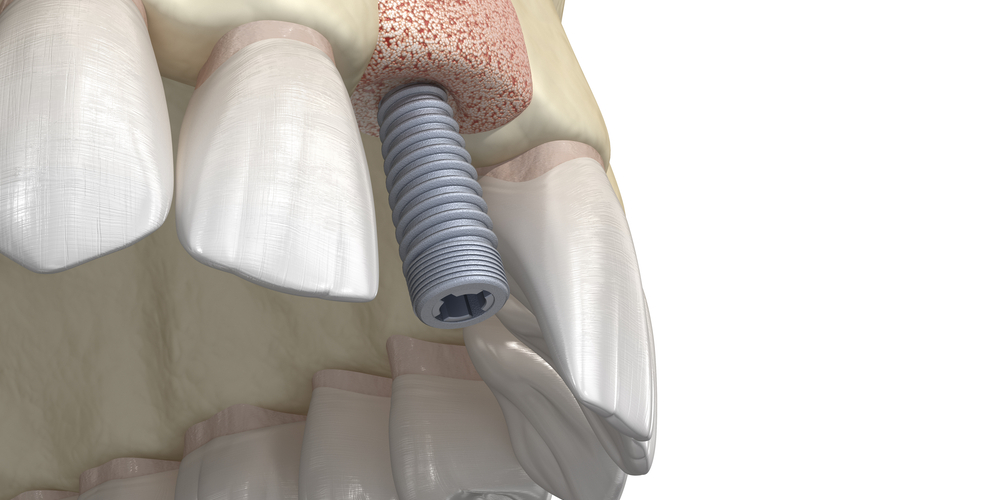Are you a long-term denture wearer? Or have you been missing one or more missing teeth for several years? Have you been considering dentures but concerned about surrounding jaw bone loss? A bone graft may be the answer you’re looking for, don’t be put off by the name, it’s not as bad as it seems! In just a matter of months you could have a much stronger jaw and a whole, brand new set of teeth.
What Are Dental Implants?
Dental implants offer their patients a new lease of life. This is because they are able to replace one or more missing teeth, including up to a full arch! They replace missing teeth in the form of small, titanium rods, which are placed directly into the jawbone. This offers the greatest support dental treatment can offer, particularly for the tooth restorations.
Tooth restorations come in the form of dental bridges, crowns and dentures and are designed with you in mind. They match the colour, shape and size of the other surrounding teeth, so onlookers won’t even notice that you have undergone any dental work! Dental implants have been proven to last for years, even a lifetime in some cases, which is all dependent upon how you take care of them.
What Is A Bone Graft?

Dental implants require a strong, thick jawbone so that the implants can stay upright and firmly in place. Denture wearers may find that over time their dentures have caused bone shrinkage around the jaw. Those who have had missing teeth for several years will also find that their gums may have receded and may note a loss of bone in the area. In these cases, a bone graft is required. Bone is taken either from your own body or from an animal and placed into the thinned area.
The procedure is as follows:
- The donor site and recipient site are injected with a local anaesthetic, to numb both areas and so the patient will feel no pain or discomfort.
- An incision is placed in the recipient site, which is ready to receive the new bone.
- The bone taken from the donor site (usually from the chin) is cut into a small block and removed to be placed into the recipient site.
- If the bone from the patient is unsuitable, either a synthetic graft will be created or the bone will be taken from another human donor or animal. This will all be carefully assessed before the patient goes ahead with the graft.
- Marrow may be added to the site to speed up the integration process and the surgeon will place a membrane over the graft, which is then stitched up.
- Antibiotics and an antibacterial mouthwash will then be issued to the patient who has undergone the treatment and asked to return in several months when the area has completely healed up.
- This is when the dental implant process can then take place.
What Are The Risks?
With all surgical procedures a slight risk may be likely. In the case of the bone graft, the highest risk is infection. It is imperative to keep the newly grafted area clean by carefully following the dentists/surgeons instructions.
If you require any more information regarding bone grafts, with details on synthetic/animal bone usage it is highly advisable that you have a discussion with your local, cosmetic dentist.